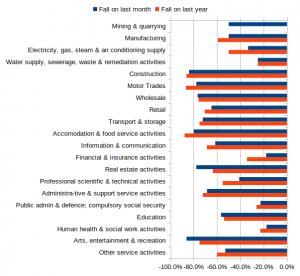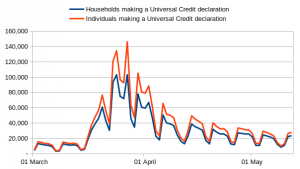May 2020
The headline labour market figures for employment and unemployment published on 19 May still do not incorporate the impact of the coronavirus pandemic. However, other numbers released today for claimant unemployment, working hours, and vacancies all point to a dramatic negative impact of the crisis.
- The ONS figure for claimant unemployed is 2,096,600 in April, sharply up by 856,500 or 69.1% on last month, and the claimant rate is 5.8%.
- The ONS figure for 18-24 claimant unemployed is 378,100 in April, up by 143,100 or 60.9% on last month.
- Vacancies fell 157,000 in the three months to April.
- Single month vacancies fell 399,000 or 53.2% in April from March.
- Unemployment was 1,348,000, in January to March 2020 and decreased by 17,000 from last month’s published figure (quarterly headline rose by 58,000) and the unemployment rate 3.9%, is down by 0.1 percentage points on last month and has risen by 0.1 percentage points on last quarter.
- The number of workless young people (not in employment, full-time education or training) was 983,000 in January to March 2020, and rose by 21,000 on the quarter, representing 14.3% of the youth population (is up by 0.3 percentage points).
- Youth unemployment (including students) was 516,000 in January to March 2020 and is up by 35,000 on the quarter.
- The employment rate was 76.6% in January to March 2020 and was up by 0.1 percentage points on last month’s published figure and increased by 0.2 percentage points in the preferred quarterly measure.
Experimental single month vacancies – by industry
The experimental single month vacancy estimates include industry detail. Vacancies fell in every sector, with falls of over 85% in the year for construction, motor trades and accommodation and food services. The smallest falls were in ‘key worker’ sectors, with an annual fall of 23% in human health and social work activities.

Chart 2: Universal Credit new claims
DWP have announced that, since Universal Credit claims started rising on 16th March, they have taken 2,619,000 individual claims, representing 2,042,560 families.

Chart 3: Youth unemployment
The number of unemployed young people has risen by 2,000 since last month’s figures, to 516,000. Meanwhile, the number of young Universal Credit or Jobseeker’s Allowance claimants sharply rose last month by 143,077, to 378,139.
